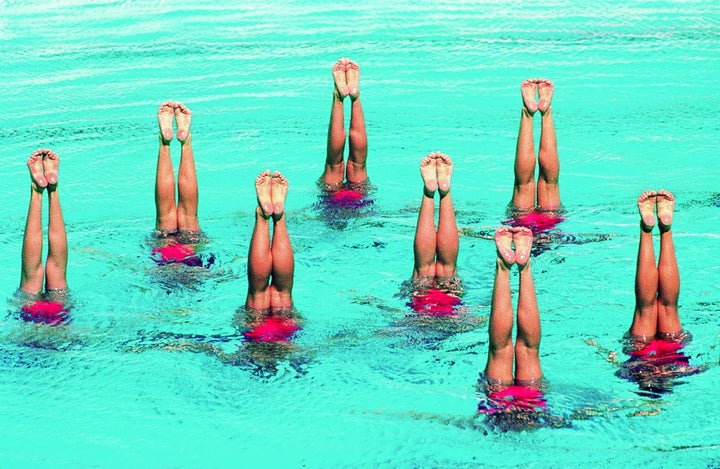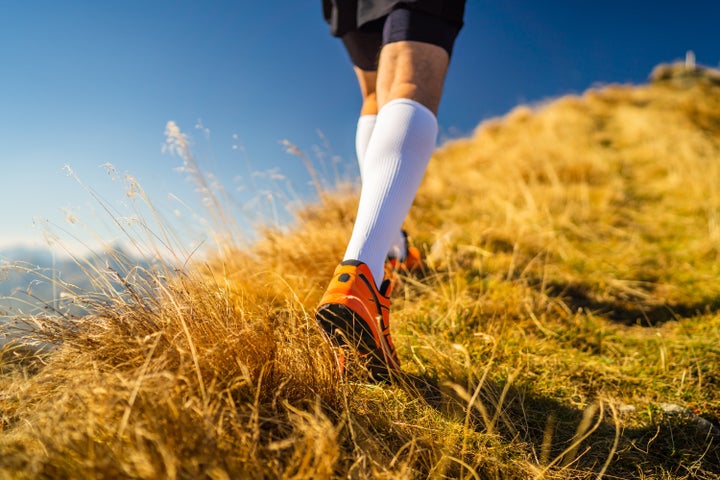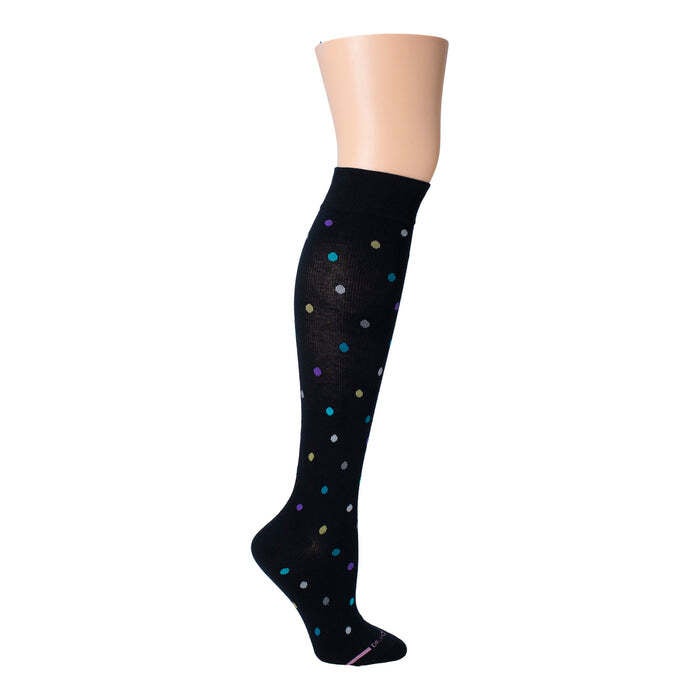
As many of us get older, we start to notice varicose veins forming on our legs. In fact, the Society for Vascular Surgery estimates that varicose veins affect up to 35% of Americans every year.
“When any of your veins stretch to more than twice their normal size, they’re considered varicose,” said Dr. Mark Iafrati, a professor of vascular surgery at Vanderbilt University Medical Center.
The veins may appear blue or purple and can cause the skin to adopt a bumpy texture, creating an appearance many people often seek to change. But varicose veins present a medical concern, too.
“Varicose veins are not just cosmetic, there is some medical reasons for treating this as well,” cosmetic laser dermatologist Dr. Mitchel P. Goldman told HuffPost. “Veins take blood back to the heart. If you can see the veins, that means they’re so large that they’re not taking blood back to the heart, they’re taking blood away from the heart. That causes your muscles and your skin not to be as healthy.”
From vein creams and gels to sprays and supplements, myriad over-the-counter products exist claiming to alleviate the appearance of varicose veins. We spoke with medical experts who weighed in on which, if any, of these options actually work.
Why Varicose Veins Form
Varicose veins form when valves in the veins are damaged or weakened, which can happen for a variety of reasons. Dr. Benjamin Jacobs, a board-certified surgeon and an assistant professor in the University of Florida Division of Vascular Surgery and Endovascular Therapy, names some top risk factors as being overweight, giving birth to four or more children, and having a job where you stand for long periods of time.
“Anything that you see on the internet that says, ‘just put on this cream’ it’s total BS. It just doesn’t work.””
- Dr. Mitchel P. Goldman
Of course, being seated for too long poses a problem, too. Ultimately, “the issue is gravity,” Jacobs said. “Anybody who is seated or standing in one position for extended periods of time is going to be at risk.
Wearing high heels plays a role in creating varicose veins, according to Iafrati. “Wearing high heels prevents your ankle from flexing,” he said, adding that when it comes to venous disease, “ankle flexion is actually the very best thing you can do for an exercise to remain healthy.”
That’s because rotating your ankles promotes blood flow in the legs, preventing blood from pooling and potentially clotting.
Tobacco use, history of blood clots and genetics are also contributing factors. “It very commonly runs in families,” Jacobs said. “Probably the best predictor of if you’re going to get them is either if you have a job that puts you at risk, or if your mom or your dad had them.”
Aging contributes to the formation of varicose veins as well, since the veins that help control blood flow tend to wear down over time. Accordingly, Jacobs said “the majority of people with symptomatic varicose vein disease are going to be elderly.”
Do Over-The-Counter Varicose Vein Treatments Work?
If you have developed varicose veins, it can be tempting to simply jump online and order a $19 cream that claims to help eliminate them, or buy $16 patches that supposedly alleviate the discomfort of varicose veins and diminish their appearance.
But “once you develop the veins, they can only go away with [medical] treatment,” Goldman said. “They really don’t go away with creams or pills or things of this sort. Anything that you see on the internet that says, ‘just put on this cream,’ it’s total BS. It just doesn’t work.”
Iafrati agreed. “There’s really not much data to suggest that the topical therapies do much, so I really don’t advocate for those products,” he said.
So how come these products can even be sold?
“Does it say FDA approved?” asked Dr. Richard Schutzer, chief of vascular surgery at NYU Langone Hospital in Brooklyn. “Whether you’re talking about vitamins, supplements or something along those lines, the criteria are not quite as stringent. They’re not necessarily causing any harm, but you’re not necessarily going to get what you expect.”
The same goes for supplements, like horse chestnut seed extract pills, which claim to support leg vein health.
“There’s two ways that a drug could potentially make your varicose veins better,” Iafrati explained. “One is if it increases the tone of the vein to make them squeeze. The second thing is it makes them less leaky. There is a 30-plus year history of people investigating these products. The problem is, you don’t really know what you’re getting if you’re just going on the internet and buying whatever people are putting in a package.”
Iafarati named Daflon 500 mg, found in the prescription dietary supplement Vasculera, as the most effective supplement for treating varicose veins because of its ability to improve blood flow. But before you try any sort of supplement, you should always talk to your doctor first.

Outside of products, Schutzer told HuffPost that elevating the legs above the heart for 30 minutes a day, three times a day, can help assuage pain, burning and aching associated with varicose veins. Regularly wearing compression stockings or compression socks also helps reduce those symptoms, as well as reducing the likelihood of more varicose veins forming.
Compression socks are labeled by a unit of pressure called mmHg. Standard compression levels are 15-20 mmHg (over-the-counter), 20-30 mmHg (medical class 1), 30-40 mmHg (medical class 2) and 40-50 mmHg (medical class 3). Jacobs said he puts most of his patients in pairs that are 15-20 mmHg or 20 to 30-mmHg.
However, compression stockings won’t alleviate discoloration. “In terms of reducing the appearance, really the only thing that significantly improves it without intervention is coverups,” Schutzer said, referring to putting makeup over the veins.
The Best Options For Treating Varicose Veins
Goldman said medical treatment is the most effective method of alleviating varicose veins for good. “I like to tell my patients, if you have a ceiling tile in your house or apartment that has a stain on it, you just don’t change the ceiling tile, you have to go up to the roof and figure out where it’s leaking from,” he said.
Non-surgical medical options include laser treatment and sclerotherapy, in which a doctor injects the varicose veins with a solution that causes the vein to swell and eventually close up.
More invasive options are high ligation and vein stripping — the tying off and removal of a vein — and ambulatory phlebectomy, the removal of smaller varicose veins through a series of small skin punctures. Goldman said that if done correctly, in 90% of all these procedures, the veins should no longer be visible with one treatment.
“And so if doctors like vein clinics, which try to make a lot of money off of people, have to do six or seven treatments, that’s wrong,” he continued. “If it’s done properly, it should be one treatment.”
The treatments don’t take long and involve little risk to the patient. “I would say about 90 to 95% of the interventions are being done in the office in about 20 minutes or so,” Schutzer said. “The interventions are very well tolerated.”
Iafrati sees most of his patients go back to work the day after their procedure. But before it comes to seeking medical intervention, “we strongly encourage people to do all the conservative things to start — the compression and elevation, and try the oral agents,” Iafarti said.
And if you’re worried about the more serious ramifications of varicose veins, don’t be.
“[Venous disease] is not a systemically significant risk to life,” he said.
